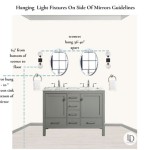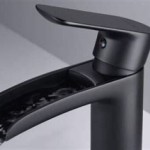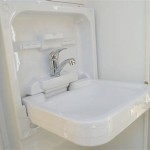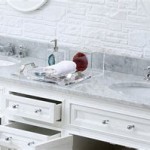Bathroom Extractor Fan Flat Roof Ventilation
Maintaining adequate ventilation in a bathroom is crucial for preventing moisture buildup, mold growth, and unpleasant odors. While many homes utilize bathroom extractor fans that vent directly to the exterior wall, flat-roofed buildings pose a unique challenge. In such cases, effectively directing the exhaust air from the bathroom to the roof requires careful planning and appropriate ventilation methods. This article delves into the intricacies of bathroom extractor fan installation on flat roofs, exploring the key considerations and best practices.
1. Understanding the Challenges of Flat Roof Ventilation
Flat roofs, unlike pitched roofs, lack the natural slope that encourages airflow and facilitates the removal of moisture. This makes it crucial to install bathroom extractor fans that effectively expel humid air from the bathroom. However, the absence of a downward slope can lead to challenges in directing the exhaust air upwards and outwards from the roof surface. In addition, the potential for water pooling on the roof surface can hinder the performance of the extractor fan and even compromise the integrity of the roof itself.
2. Choosing the Right Extractor Fan for Flat Roof Ventilation
Selecting the appropriate extractor fan for a flat roof is paramount. Consider the following factors:
a. Fan Capacity: The extractor fan's capacity, measured in cubic meters per hour (m³/h), should adequately handle the volume of air generated by bathroom activities to ensure efficient moisture removal. A higher capacity fan is typically required on flat roofs due to the potential for restricted airflow.
b. Fan Type: Axial fans are commonly used in bathrooms. These fans have a single impeller that draws air in one direction, making them suitable for short duct runs. For long duct runs or high humidity levels, centrifugal fans, with their curved impeller design, provide higher pressure and can effectively expel air over longer distances.
c. Ducting Material and Size: The ducting material should be resistant to moisture and corrosion, with PVC or ABS being commonly used. The duct size must be appropriately matched to the fan's capacity and the length of the duct run. Smaller duct sizes can lead to increased noise and reduced airflow.
3. Flat Roof Ventilation Methods
Several techniques can be employed for effective bathroom extractor fan ventilation on flat roofs.
a. Vertical Ducting with Roof Vent: This commonly used method involves extending a vertical duct from the extractor fan through the roof, terminating in a roof vent. The roof vent should have a larger cross-sectional area than the duct to minimize backpressure and enhance airflow. A rain cap is essential to prevent water ingress into the duct. The height of the vent above the roof surface should be sufficient to minimize the risk of air recirculation.
b. Horizontal Ducting with Offset Vent: If a vertical vent is not feasible, a horizontal duct can be used. The horizontal duct is routed to the roof edge and connected to an offset vent. This vent is mounted at a slight angle to direct the exhaust air away from the roof surface and minimize the risk of water accumulation. This method requires careful design and installation to ensure adequate airflow and prevent moisture buildup in the horizontal duct.
c. Air-Powered Ventilation: In some cases, an air-powered ventilation system that uses compressed air to expel the exhaust air can be employed. This method is particularly suitable when space constraints limit the use of traditional ducting. However, it requires a source of compressed air and may be more costly to install.
d. Solar-Powered Fans: Solar-powered fans can be a sustainable and environmentally friendly option for flat roof ventilation. These fans operate without electricity, relying on solar energy to power their operation. However, their capacity may be limited compared to traditional fans, and their performance can be affected by weather conditions.
Regardless of the ventilation method chosen, proper installation is crucial for its effectiveness. Engaging a qualified contractor experienced in flat roof ventilation is recommended for optimal results.
By carefully selecting an appropriate extractor fan, employing a suitable ventilation method, and ensuring professional installation, homeowners can create a well-ventilated bathroom on a flat roof that effectively removes moisture, prevents mold growth, and promotes a comfortable and healthy environment.

Flat Roof Attic Ventilation The Benefits Of

4 Inch Flat Roof Vent For Intake And Exhaust Terminations

Flat Roof Attic Ventilation The Benefits Of

Active Ventilation 4 In Dia Keepa Vent An Aluminum Roof For Flat Roofs Kv The Home Depot

110mm Ø Black Flat Roof Vent Axia
Installing A Bathroom Extractor Fan Mig Welding Forum

Active Ventilation 12 In Dia Keepa Vent An Aluminum Roof For Flat Roofs Kv The Home Depot

Flat Roof Attic Ventilation The Benefits Of

Dryerjack Flat Roof Curb Style Vent

Natural Light Svf Bathroom Exhaust Fan 10 Inch







